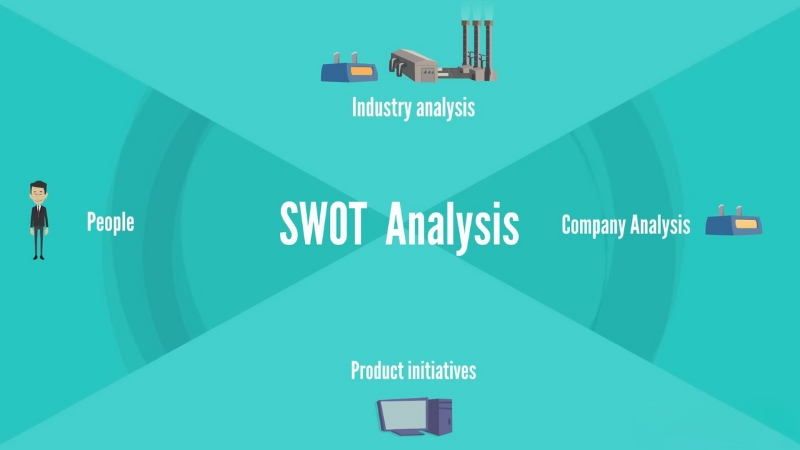A SWOT analysis is one of the simplest but most powerful tools available in project management. In 2025, when projects face tighter budgets, shifting stakeholder expectations, and constant market uncertainty, SWOT helps teams cut through assumptions and ground their planning in reality.
The framework, Strengths, Weaknesses, Opportunities, and Threats, forces project managers to map out not just what could go right, but also what could undermine success.
Put plainly: SWOT improves project planning by aligning internal resources with external conditions, exposing blind spots before execution, and giving teams a clear risk–opportunity map. The result is fewer surprises, better decisions, and stronger outcomes.
Why SWOT Is Valuable in 2025 Project Environments
Projects today are rarely linear. Remote teams, AI integration, supply chain risks, and regulatory shifts all add complexity. A SWOT analysis forces managers to pause and assess both the internal project setup and the external business environment.
For example, a construction project in a city with strict zoning rules might use SWOT to highlight “engineering expertise” as a strength but “permitting delays” as a threat. This dual view prepares the team to use its strengths while actively managing risks.
Structure of a SWOT Analysis in Project Management
A typical SWOT analysis is presented in a 2×2 matrix, making it visually straightforward.
| Internal Factors | External Factors |
| Strengths: skills, resources, budget, leadership, stakeholder support | Opportunities: favorable regulations, new technologies, market demand, partnerships |
| Weaknesses: limited budget, skill gaps, slow processes, unclear scope | Threats: economic downturn, competitor moves, policy changes, supply chain risks |
The simplicity is the appeal. Teams can brainstorm in workshops, collect insights from stakeholders, and quickly map these into the matrix.
Concrete Example: IT System Implementation
Imagine an organization implementing a new enterprise resource planning (ERP) system. A SWOT analysis might look like this:
| Category | Example Findings |
| Strengths | Strong executive sponsorship; experienced IT team; budget secured for full deployment |
| Weaknesses | Lack of user training; dependency on one vendor; complex legacy systems |
| Opportunities | Automation of manual workflows; improved reporting; competitive advantage in efficiency |
| Threats | Resistance from employees; cyber risks during migration; project delays due to vendor bottlenecks |
Here, SWOT makes it clear that while leadership support and funding are strong, employee resistance and cyber risks must be actively managed. This informs both planning (budgeting for training programs) and execution (adding stronger cybersecurity protocols).
How SWOT Improves Planning

- Clarifies Priorities – SWOT separates what you can control (strengths and weaknesses) from what you cannot (opportunities and threats). This helps project managers focus on what matters most in their control while preparing contingencies for external risks.
- Improves Resource Allocation – By identifying key strengths, such as a skilled project manager or strong stakeholder buy-in, resources can be allocated strategically to areas that generate the highest return.
- Builds Realistic Timelines – Weaknesses and threats often reveal hidden delays. Factoring them in early makes schedules more realistic, preventing costly overruns later.
- Aligns Stakeholders – Presenting a simple SWOT matrix at kickoff meetings ensures all stakeholders see the project’s context clearly, reducing misaligned expectations.
How SWOT Improves Results
Beyond planning, SWOT also enhances execution and outcomes.
A 2024 PMI (Project Management Institute) survey noted that projects using structured risk analysis, including SWOT, had 25% higher on-time delivery rates compared to those without formalized risk mapping. That’s a concrete performance edge.
4 Best Practices for Using in Project Management

A SWOT analysis delivers the most value when it is not treated as a one-off brainstorming session but as a structured and evolving process. Many project managers make the mistake of doing a quick SWOT at the kickoff meeting, storing it in a presentation file, and never looking at it again.
1. Involve Cross-Functional Teams
If only project managers or executives participate, the result is often biased or incomplete. By bringing in finance, operations, IT, procurement, and even frontline staff, you get a holistic view of strengths, weaknesses, opportunities, and threats.
For example, finance may highlight budget flexibility as a strength, while frontline staff may expose a critical weakness in current workflows that leadership overlooks. A cross-functional SWOT ensures blind spots are minimized.
2. Update Periodically
Projects often last months or even years, and both internal and external factors change constantly. For instance, a regulatory shift midway through a project can instantly turn a neutral factor into a major threat.
That’s why it is best practice to revisit the SWOT at mid-project milestones and during major review meetings. Doing so keeps the analysis relevant and helps the team pivot faster when conditions change.
3. Link Findings to Actions
A good SWOT should always connect findings to concrete project actions. For example, if a weakness identified is “limited user training capacity,” the linked action might be to allocate budget for e-learning modules or schedule hands-on sessions earlier.
Similarly, if an opportunity is “new government subsidies,” the action might be to engage a compliance officer to ensure eligibility. Without this link, SWOT risks becoming a “list with no impact.”
4. Keep It Visual
A long, text-heavy report will rarely be read. Instead, project managers should keep the SWOT matrix visual and accessible, whether in a physical war-room whiteboard or using tools like Miro, Trello, or Microsoft Planner.
Keeping the analysis visible allows the team to use it as a reference point during stand-up meetings and decision-making.
Here is how best practices can be structured:
| Best Practice | Why It Matters | Practical Example |
| Cross-Functional Teams | Prevents bias and captures a 360° view | Finance identifies budget strengths while IT exposes cybersecurity risks |
| Update Periodically | Keeps analysis relevant to evolving conditions | Revisiting SWOT after a regulation change reveals new compliance threats |
| Link Findings to Actions | Ensures SWOT drives tangible improvements | Weakness: lack of training → Action: launch e-learning program |
| Keep It Visual | Improves stakeholder communication and team alignment | Miro board updated weekly with strengths, weaknesses, opportunities, threats |
By applying these practices consistently, SWOT becomes a decision-making tool rather than a forgotten workshop exercise.
Limitations

Its value depends heavily on the people conducting it and how the results are applied. Used incorrectly, SWOT can create a false sense of clarity without leading to meaningful action.
1. Subjectivity
For example, one stakeholder may view “flexible deadlines” as a strength, while another sees it as a weakness due to a lack of urgency. This subjectivity means results can be inconsistent and sometimes misleading.
To counter this, project managers should cross-check SWOT items with data (KPIs, risk logs, performance metrics) rather than relying only on opinions.
2. Lack of Prioritization
This creates the risk of treating minor issues as equal to major risks. For example, listing both “lack of skilled developers” and “small meeting room availability” as weaknesses does not help a team focus.
To overcome this, many project managers pair SWOT with impact–probability matrices or weighted scoring models to prioritize items.
3. Static Snapshot
A factor that was a threat at initiation, such as potential supply shortages, might become irrelevant if the supply chain stabilizes. Conversely, new risks can emerge without being reflected in the original SWOT.
If left unreviewed, the analysis becomes outdated and misleading. That’s why SWOT should be considered a baseline diagnostic tool, not a comprehensive risk management system.
Here is how these limitations compare with ways to mitigate them:
| Limitation | Why It’s a Problem | How to Mitigate |
| Subjectivity | Results reflect opinions, not facts | Cross-check with data, KPIs, and risk registers |
| Lack of Prioritization | Treats all items as equally important | Use risk scoring or impact–probability ranking |
| Static Snapshot | Becomes outdated in fast-changing environments | Revisit and update the SWOT at milestones |
This is why many project managers complement SWOT with other tools such as risk registers, RACI matrices, Gantt-based scenario planning, or Monte Carlo simulations. SWOT is excellent for starting conversations and building shared understanding, but it should not be the sole decision-making tool.
Final Word
View this post on Instagram
In 2025, project managers are expected to deliver results in environments where uncertainty is the norm. A SWOT analysis provides a structured but flexible way to map out internal strengths and weaknesses alongside external opportunities and threats.
The same approach proves invaluable in a guide to launch a startup, where early clarity on risks and advantages sets the stage for sustainable growth.
By integrating it into the planning phase, teams improve resource allocation, timelines, and stakeholder alignment. By revisiting it during execution, they mitigate risks and seize emerging opportunities.
The outcome is clear: projects with SWOT embedded in their planning achieve better foresight, fewer surprises, and stronger results. For any project manager looking to sharpen planning and execution, SWOT remains a simple tool with an outsized impact.
Viola Moorhouse is the coauthor and research lead at Sharkalytics.com, specializing in startup performance tracking and investor strategy.
With a background in market research and business journalism, Viola focuses on separating the hype from the reality in the world of televised entrepreneurship. She’s passionate about making complex startup stories accessible to a wide audience.



